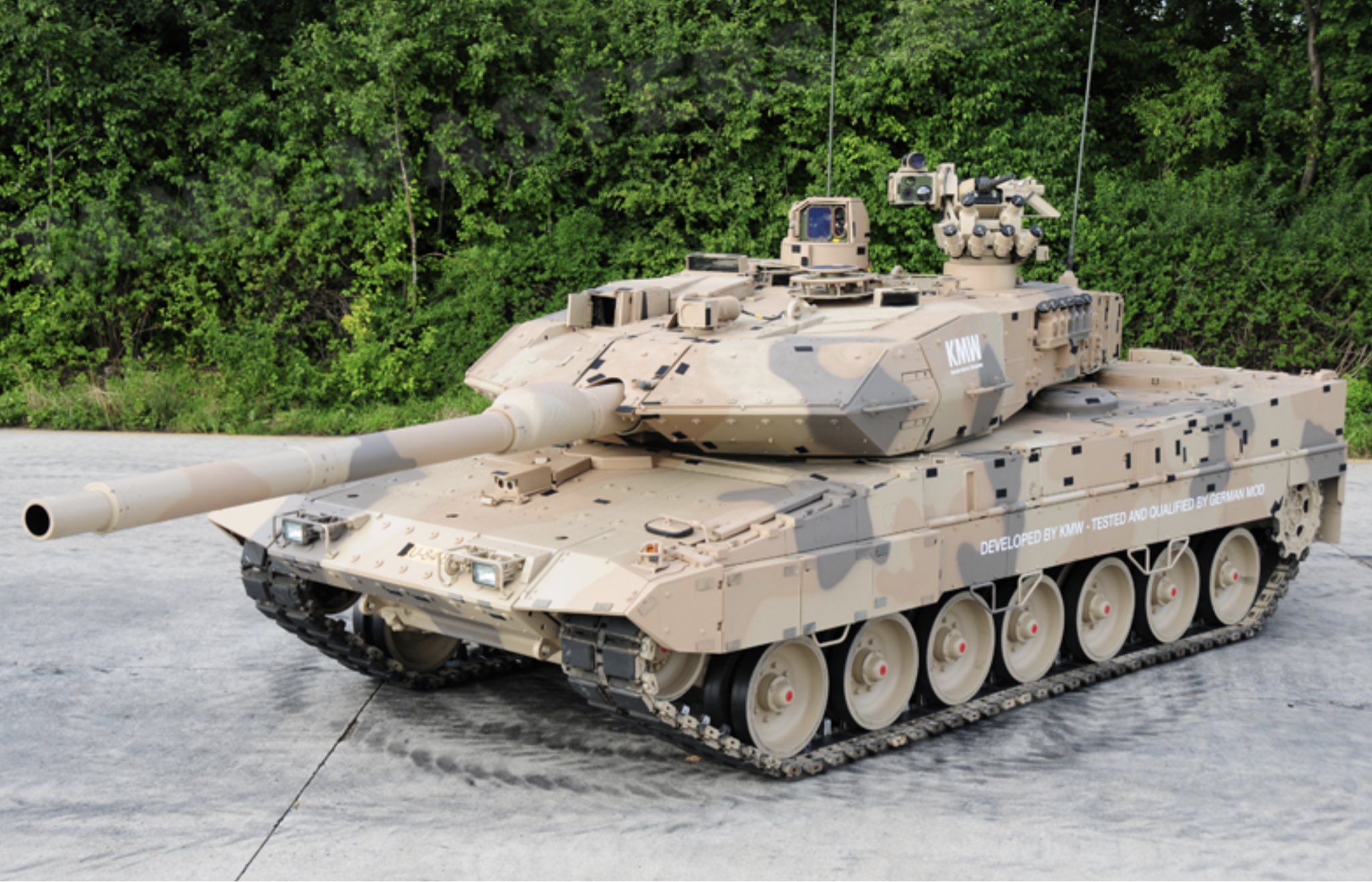In 2020, the Norwegian government announced a competition to find a new tank model for its armed forces. Out of nine models in the fray, two were shortlisted as finalists – South Korea’s K2 Black Panther and Germany’s Leopard 2A7.
More Effective Than S-400 & Iron Dome – Why Laser Weapons May Not Just Replace Traditional Air Defense Systems?
The winning tank will replace the Norwegian Army’s aging fleet of Leopard 2A4 MBTs. Late last month, the Norwegian Defence Materiel Agency (NDMA) declared that the winter trials for Norway’s next MBT have begun at the Rena camp in Østerdalen.
The makers of the Panther and the Leopard – Hyundai Rotem and Krauss-Maffei Wegmann (KMW) respectively – have sent two tanks each to the European country for the trials. The two finalists will undergo extensive mobility and firing tests for evaluation. A contract is to be signed by the end of the year, and deliveries are planned from 2025 onward.
Leopard 2A7+
Leopard 2A7+, an upgraded variant of the Leopard 2A6 MBT, is a battle-proven tank. It was used in Afghanistan by NATO’s partner Canada. The tank features augmented protection and reconnaissance abilities. It can operate in both low-intensity conflicts and high-intensity warfare.
The system uses digitized technology and multifunctional user concept for enhanced sustainability. Its turret and chassis are fitted with a cooling system.
The tank measures around 10.97m in length, has a width of up to 4m, and has a turret roof height of 2.64m. The vehicle, which can be controlled by a crew of four, weighs 67,500kg. While its modular design enables high-intensity operations in urban surroundings, the MBT’s communication interface-integrated exterior allows interaction with other ground troops.

The system comes equipped with an FLW 200 modular remote-controlled light weapon station. The purpose of this station is to provide active self-defense from a variety of targets. The weapon system employs automatic vehicle detection ability and optoelectronic equipment. It has a high elevation aiming angle ranging from -15° to 70°.
In terms of the weapons themselves, The MBT’s primary armament is a 120mm L55/L44 smoothbore gun. This gun can shoot standard NATO ammunition and new programmable 120mm HE-rounds. The tank can also feature a 7.62mm machine gun and 40mm grenade launchers or a .50 machine gun. To hide the tank for enemy observation, smoke grenade launchers can be mounted on either side of the weapon station.
The Leopard’s modular protection kit comes with passive armor modules and offers 360-degree protection to the crew from anti-tank missiles, mines, improvised explosive devices (IEDs), and rocket-propelled grenade (RPG) fire. The tank is also fitted with a mine plow, mine roller, or a dozer blade for clearing mines and obstacles.
In terms of power and speed, this MBT which is powered by an MTU MB 873 diesel engine, generates a power of 1,500hp and can attain a maximum speed of 72km/h.
K2 Black Panther
The Korean-built K2 Black Panther comes fitted with auto-target detection and tracking system, alongside a hunter-killer function. Doosan Corporation Mottrol has provided the tank with an electrical gun and turret driving system (EGTDS) that boosts the power of the vehicle (28-260VDC). The system also features a thermal imager and laser rangefinder enabling day/night observation.
The K2 Black Panther, which can be operated by a crew of three members, has a length of 10.8m, a width of 3.6m wide, and a height of 2.4m. The ground clearance of the vehicle is 0.45m and the combat weight is 55t.

For offense, the Black Panther uses a 120mm L/55 smoothbore gun with an automatic loader as its main weapon. The 120mm gun can fire around 10 rounds every minute. The MBT’s secondary armament includes a 12.7mm heavy machine gun and a 7.62mm machine gun.
For defense, this tank is equipped with Composite Armour and Explosive Reactive Armour (ERA). It also has a collective nuclear, biological, and chemical (NBC) protection system. The ammunition compartment features a blow-off panel to protect the crew from ammunition exploding.
The tank features an active protection system to offer protection against anti-tank rockets and missiles. Additionally, the system has two banks of smoke grenades, with six launchers each. The vehicle also comes with an identification friend or foe (IFF) system.
The MT 833 diesel engine from Tognum in the tanker provides it with a power of 1,500hp. The fully automatic transmission of the vehicle includes five forward and three reverse gears.
The tank can successfully maneuver on soft soil and terrains with obstacles. It has a maximum speed of 70km/h on-road, and a top speed of 50km/h off-road. The water-fording capabilities are especially stunning. The Black Panther can ford at a depth of 4.1m in water by employing an onboard extensible conning tower/snorkel.
When crossing a water body, the tank’s turret becomes watertight. Up to 500 gallons of water can be put on board the tank as ballast to boost the vehicle’s weight by nearly two tonnes. This can guarantee that the MBT maintains touch with the ground.
Additionally, the K2 has the ability to lean forward and backward. In the hull-down positions, this capability improves the agility of the tank’s main gun. The tank can also raise its main cannon when leaning backward to better target low-flying aircraft or more highly raised targets.
Both tanks have their own advantages. In case the Black Panther wins, the first batch of tanks will be produced in South Korea by 2025. However, a large part of the contract will be fulfilled by Norwegian enterprises organizing assembly using components developed in the country. The second and subsequent batches will also be produced in Norway.
Additionally, the tank has increased security due to the ballistic package and dynamic protection. These are considerable plus points. The Leopard 2A7+ on the other hand is used by quite a few countries in the European region close to Norway and has already proven its merit on the battlefield.
- Contact the author at: shreyya.mundhra@gmail.com
- Follow EurAsian Times on Google News




